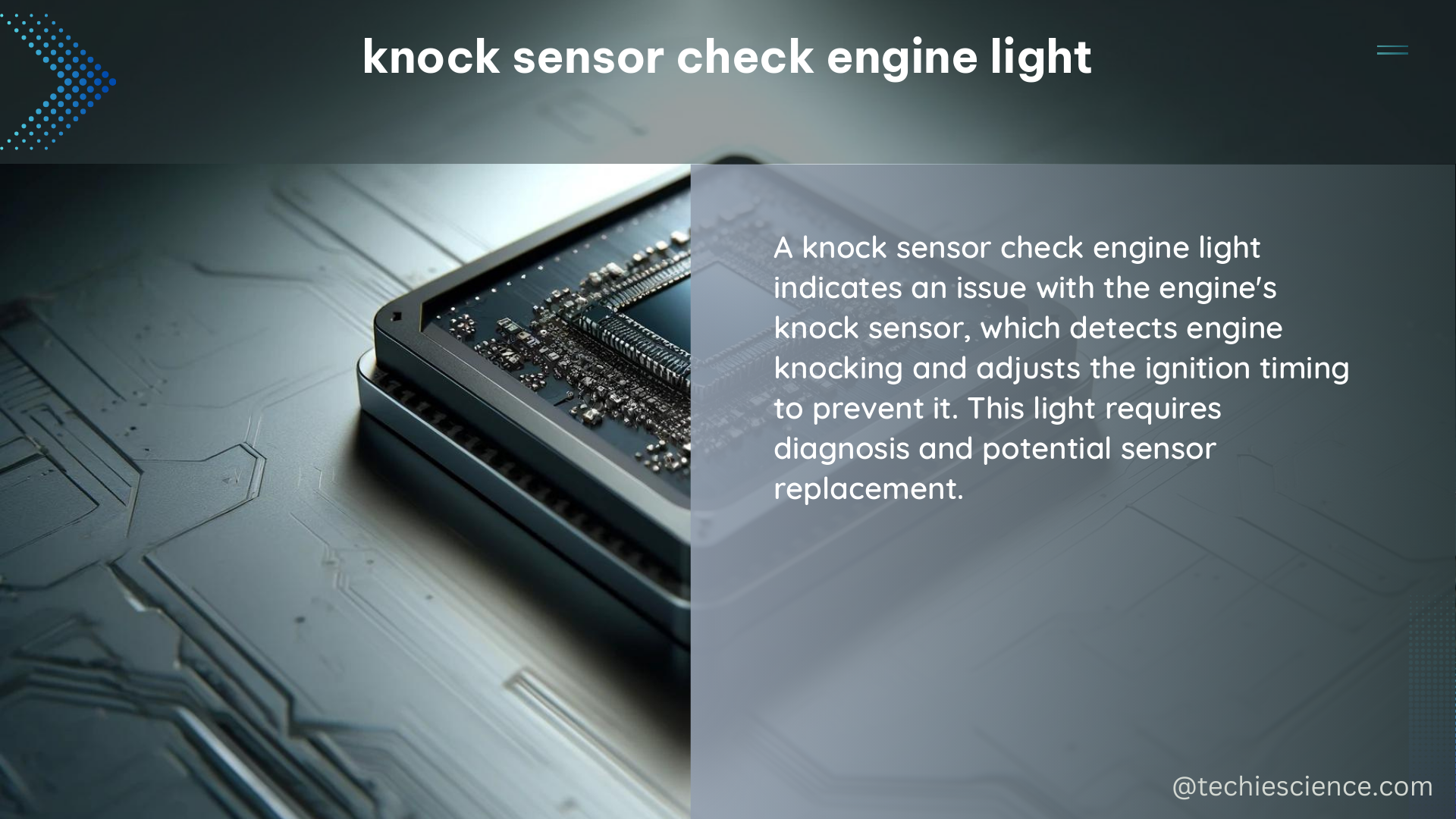The knock sensor is a critical component in modern internal combustion engines, responsible for detecting engine knocking or pinging, which can cause significant engine damage if left unchecked. When the knock sensor detects an anomaly, it triggers the check engine light to alert the driver of the issue. Understanding the technical specifications of the knock sensor and the diagnostic process is essential for addressing this problem effectively.
Understanding the Knock Sensor
The knock sensor is typically a variable reluctance sensor that measures the vibrations produced by engine knocking. It generates an analog voltage signal that varies with the intensity of the vibrations. The engine control module (ECM) or powertrain control module (PCM) uses this signal to adjust the ignition timing and fuel injection to prevent engine knocking.
Technical Specifications of the Knock Sensor
- Resistance: The knock sensor’s resistance typically ranges between 500 and 2000 ohms.
- Voltage Range: The sensor’s voltage range is usually between 0.5 and 4.5 volts.
- Frequency Response: The sensor’s frequency response is critical, typically ranging from a few hundred Hz to several kHz, depending on the engine’s RPM.
The knock sensor’s resistance and voltage range are essential for ensuring proper operation and compatibility with the vehicle’s electrical system. The frequency response, on the other hand, allows the ECM/PCM to accurately detect and respond to engine knocking.
Diagnosing the Knock Sensor Check Engine Light

To diagnose and address the knock sensor check engine light, follow these steps:
1. Visual Inspection
Begin by visually inspecting the knock sensor’s wiring and connectors for any signs of damage, loose connections, or corrosion. These issues can interfere with the sensor’s signal and trigger the check engine light.
2. Measure Resistance
Use a multimeter to measure the knock sensor’s resistance. If the resistance is outside the specified range of 500 to 2000 ohms, the sensor will need to be replaced.
3. Check Voltage
Connect a scan tool to the vehicle’s diagnostic port and monitor the knock sensor’s voltage signal while the engine is running. If the signal is outside the specified range of 0.5 to 4.5 volts or shows no variation, the sensor will need to be replaced.
4. Perform a Road Test
With the scan tool connected, perform a road test and monitor the knock sensor’s voltage signal under various driving conditions. If the signal is abnormal or inconsistent, the sensor will need to be replaced.
5. Analyze Diagnostic Trouble Codes (DTCs)
Use the scan tool to read any diagnostic trouble codes related to the knock sensor. These codes can provide valuable information about the specific issue and guide the diagnostic process.
6. Check for Mechanical Issues
In some cases, the check engine light triggered by the knock sensor may be due to mechanical issues, such as engine wear, loose components, or improper fuel delivery. Inspect the engine and related systems to rule out these potential causes.
Addressing the Knock Sensor Check Engine Light
If the diagnostic process confirms a problem with the knock sensor, the sensor will need to be replaced. When replacing the knock sensor, be sure to use a genuine or high-quality replacement part that meets the original manufacturer’s specifications.
After replacing the knock sensor, clear any diagnostic trouble codes and perform a test drive to ensure the issue has been resolved and the check engine light has been extinguished.
Conclusion
Understanding the technical specifications of the knock sensor and following a systematic diagnostic process is crucial for addressing the knock sensor check engine light. By addressing this issue promptly, you can prevent potential engine damage and ensure optimal vehicle performance.
References
- Analysis Techniques for Race Car Data Acquisition – Academia.edu
https://www.academia.edu/88089423/Analysis_Techniques_for_Race_Car_Data_Acquisition - Greenhouse Gas Emissions Standards and Fuel Efficiency … – FederalRegister.gov
https://unblock.federalregister.gov/document/2010-11-30/greenhouse-gas-emissions-standards-and-fuel-efficiency-standards-and-greenhouse-gas-emissions - J20A forced induction?? – auszookers.com • View topic
https://www.auszookers.com/forum/viewtopic.php?f=5&t=13375

The lambdageeks.com Core SME Team is a group of experienced subject matter experts from diverse scientific and technical fields including Physics, Chemistry, Technology,Electronics & Electrical Engineering, Automotive, Mechanical Engineering. Our team collaborates to create high-quality, well-researched articles on a wide range of science and technology topics for the lambdageeks.com website.
All Our Senior SME are having more than 7 Years of experience in the respective fields . They are either Working Industry Professionals or assocaited With different Universities. Refer Our Authors Page to get to know About our Core SMEs.